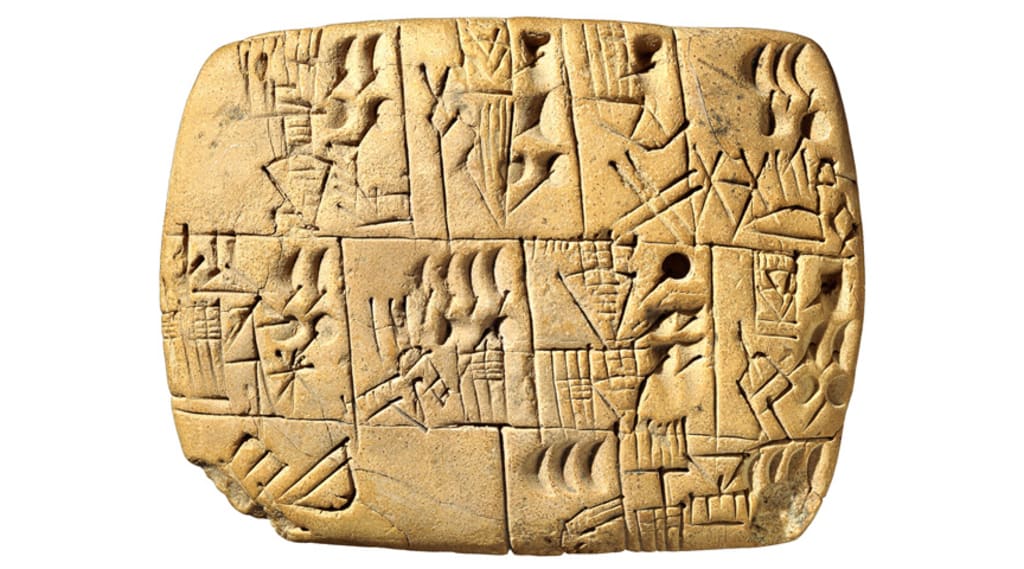Cuneiform Tablets: The Dawn of Written Communication
History

Cuneiform tablets stand as one of the most significant archaeological discoveries, marking the dawn of written communication in human history. Originating in ancient Mesopotamia, these clay tablets offer a window into early civilization, providing insights into daily life, trade, politics, and culture. In this article, we delve into the history, significance, and enduring legacy of cuneiform tablets.
Cuneiform tablets are ancient clay tablets inscribed with one of the earliest known forms of writing, cuneiform script. The term "cuneiform" comes from the Latin word "cuneus," meaning "wedge," due to the wedge-shaped marks made by a stylus on the soft clay. This writing system was developed by the Sumerians around 3400 BCE and was later adopted and adapted by other Mesopotamian cultures, including the Akkadians, Babylonians, and Assyrians.
The creation of cuneiform tablets involved pressing a stylus, typically made of reed, into soft clay to produce various wedge-shaped impressions. Once inscribed, the tablets were often baked or left to dry in the sun, preserving the text for millennia. These tablets were used for a variety of purposes, including recording transactions, legal codes, literature, and administrative records. The versatility and durability of clay made it an ideal medium for the extensive documentation needed in these early societies.
The development of cuneiform writing marked a revolutionary shift from pre-literate cultures to ones capable of preserving complex information over time and across generations. This innovation enabled the rise of large, centralized states and facilitated the administration of complex societies. By providing a means to record economic transactions, legal agreements, and historical events, cuneiform tablets played a crucial role in the growth and maintenance of Mesopotamian civilizations.
One of the most famous collections of cuneiform tablets is the library of Ashurbanipal, discovered in the ruins of Nineveh, modern-day Iraq. This extensive library, dating back to the 7th century BCE, contained thousands of tablets covering topics such as astronomy, medicine, literature, and religious texts. Among these is the Epic of Gilgamesh, one of the oldest known works of literature, which provides invaluable insights into the beliefs, values, and stories of ancient Mesopotamian society.
Cuneiform tablets also played a pivotal role in the administration of trade and commerce. Merchants and traders used these tablets to record transactions, contracts, and inventories. This early form of bookkeeping allowed for the efficient management of resources and the expansion of trade networks across the ancient Near East. The ability to keep accurate records was essential for the development of complex economies and the growth of urban centers.
The decipherment of cuneiform script in the 19th century was a monumental achievement in the field of archaeology and linguistics. Scholars such as Georg Friedrich Grotefend and Sir Henry Rawlinson worked painstakingly to unlock the secrets of this ancient writing system. Their efforts revealed the rich history and culture of Mesopotamia, providing a deeper understanding of early human civilization.
The discovery and study of cuneiform tablets have had a profound impact on our understanding of the ancient world. These artifacts offer a glimpse into the daily lives, beliefs, and achievements of people who lived thousands of years ago. They provide evidence of the early development of writing, literature, law, and science, highlighting the ingenuity and sophistication of ancient Mesopotamian societies.
In addition to their historical significance, cuneiform tablets continue to captivate modern scholars and the public alike. Museums around the world, such as the British Museum and the Louvre, house extensive collections of these ancient artifacts. Researchers continue to study and translate the tablets, uncovering new information about the past and contributing to our collective knowledge of human history.
Cuneiform tablets represent a remarkable achievement in the history of human communication. They symbolize the transition from prehistory to history, from oral traditions to written records. These ancient artifacts provide a tangible link to the early civilizations of Mesopotamia, offering insights into their culture, economy, and governance. As we continue to study and learn from these tablets, we gain a greater appreciation for the ingenuity and legacy of the ancient peoples who created them.
About the Creator
Marveline Merab
“History never repeats itself. Man always does.”
― Voltaire
Enjoyed the story? Support the Creator.
Subscribe for free to receive all their stories in your feed. You could also pledge your support or give them a one-off tip, letting them know you appreciate their work.






Comments
There are no comments for this story
Be the first to respond and start the conversation.